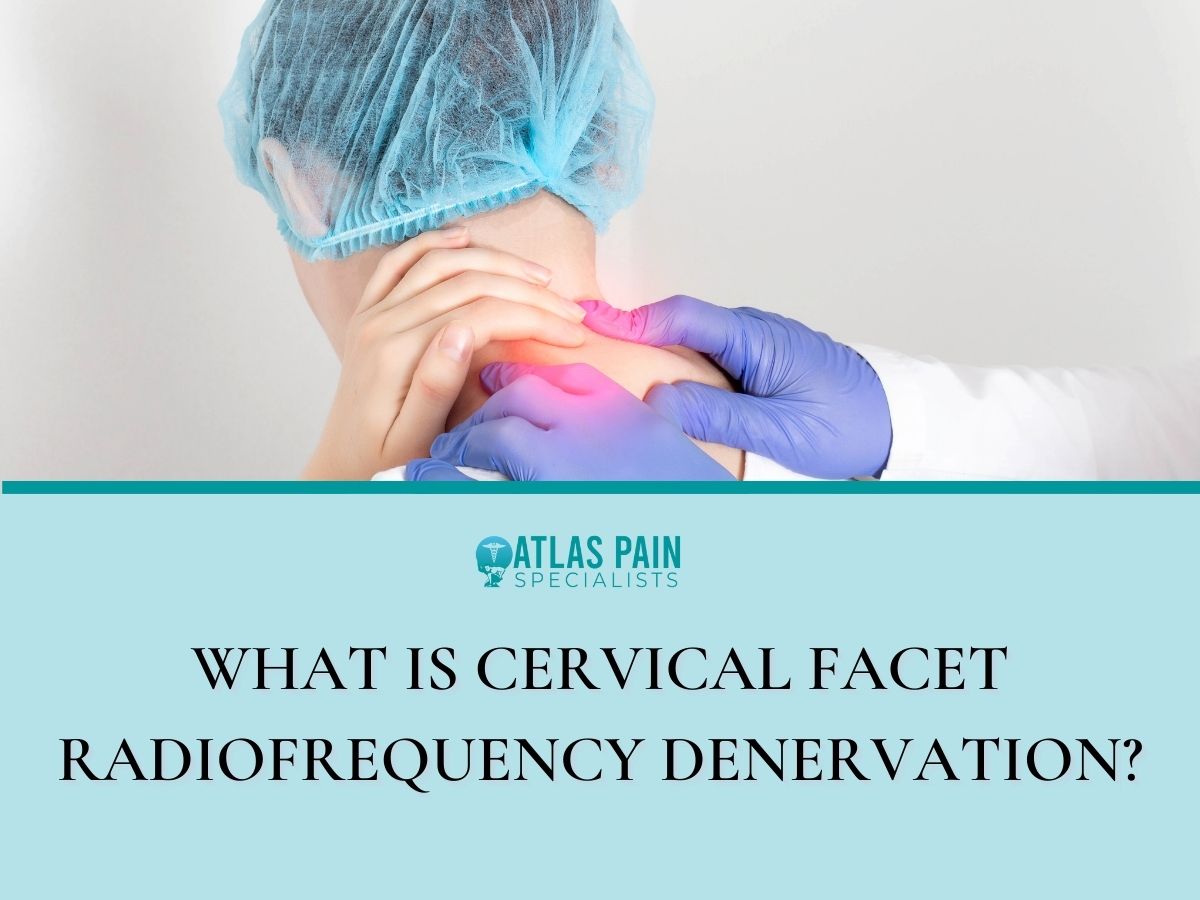

What Is Cervical Facet Radiofrequency Denervation?
If you are suffering from chronic neck pain, arthritic neck joints, or headaches arising from the cervical facet joints—cervical facet radiofrequency denervation may be an option to explore.
It’s a minimally invasive treatment to consider when other therapies and treatments have failed. Let’s dive into how it works.
What Is Cervical Facet Radiofrequency Denervation?
The entire spine has facet joints, and radiofrequency denervation may minimize or resolve your pain. Your cervical facet joints empower you to bend and twist your neck, which is something you do all day long on autopilot.
Accidents, injuries, arthritis, and degenerative spine conditions can cause severe and debilitating pain in your cervical facet joints.
Also referred to as radiofrequency ablation, neurotomy, lesioning or rhizolysis this minimally invasive treatment uses thermal radiofrequency energy to remove the tiny nerves that have sustained injury and are causing your pain.
Who Is Cervical Facet Joint Radiofrequency Denervation Right For?
Before denervation is considered, traditional treatment methods must be explored. This includes physical therapy and prescription medications.
If pain persists with traditional treatments for more than 3 months, it’s time to visit a pain management specialist to explore your options.
Before denervation, your physician will perform a test to see if cervical medial branch blocks work for you.
This test procedure is performed by using an x-ray guided device to inject a local numbing anesthetic into your damaged nerves. If this test reduces your pain by at least 80% you are an ideal candidate for radiofrequency.
However, denervation may not be the only option to consider.
Who Is Cervical Facet Joint Radiofrequency Denervation Not Right For?
If the medial branch block test doesn’t work, your pain management physician will discuss your other options. While safe and effective for most, radiofrequency denervation isn’t an option if:
- You have had spinal fusion surgery in the treatment area.
- You have had other types of denervation in the past 6 months.
Not to worry if denervation isn’t right for you as there are other treatment options to explore.
What Does Cervical Facet Joint Radiofrequency Denervation Entail?
This outpatient procedure only takes a couple of hours.
- You will need to stop eating and drinking for at least 6 hours prior to your procedure. You may need to pause some of your prescription medications, such as insulin.
- You will lay face down on a table and be given IV sedation for comfort, but you will be awake during your treatment. A local numbing anesthetic will be applied to the treatment area.
- Your physician will use an x-ray guided device to place a radio frequency cannula near the affected nerve. You may feel twitching or slight pain while they test to ensure they have identified the right nerve.
- Once the nerve is identified, thermal radiofrequency energy is applied to destroy the nerve. The process will be repeated on all affected nerves. This should take about 20 minutes.
- Once complete, recovery is 1 to 2 hours.
What Is Recovery And Follow Up?
Your neck will be sore for the next week or two, but you should be able to return to work within 2 days. You may also experience numbness, bruising, or even a slight increase in pain for the next week or so.
Pain relief should occur in about 3 weeks, and relief will last between 6 to 8 months. Your nerves will gradually grow back, and as they grow back your initial pain may or may not return.
If your pain returns, your physician will discuss your treatment options, which may include another round of radiofrequency denervation.
Ready To Learn More?
If you live in the Phoenix area and are suffering from chronic pain lasting more than 3 months or extreme pain after an accident or injury—we invite you to reach out to Atlas Pain Specialists.
We offer a variety of treatment options your general care physician may not offer. You can schedule same-day appointments and will be seen by Dr. Sean Ormond each time you visit. Pain should not be a way of life, so let’s get started!
About Dr. Sean Ormond



